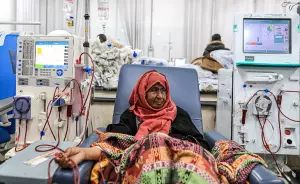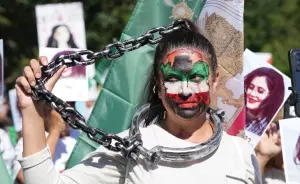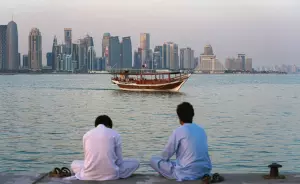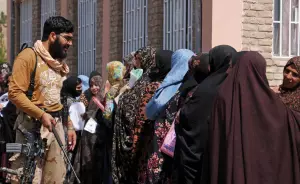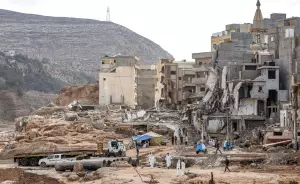The Ottomans: A Cultural Legacy
- Elaine Pasquini
- Book Talks
- Posted On

Washington Report on Middle East Affairs, January/February 2023, p. 62
History
 AUTHOR DIANA DARKE discussed her recently published book, The Ottomans: A Cultural Legacy, on a Nov. 15 webcast with the Middle East Institute (MEI). The 288-page tome (available at Middle East Books and More) focuses on the cultural life and many achievements of the Ottoman Empire, including architecture, astronomy, science, cuisine, music and cartography. “I think it is a genuine reflection of everything that the Ottomans did extremely well,” she said.
AUTHOR DIANA DARKE discussed her recently published book, The Ottomans: A Cultural Legacy, on a Nov. 15 webcast with the Middle East Institute (MEI). The 288-page tome (available at Middle East Books and More) focuses on the cultural life and many achievements of the Ottoman Empire, including architecture, astronomy, science, cuisine, music and cartography. “I think it is a genuine reflection of everything that the Ottomans did extremely well,” she said.
In her overview of Ottoman architecture, Darke explores in a particular way the work of Mimar Sinan, a water engineer who eventually became the chief Ottoman architect. “Sinan had a 16th century recycling flare that we could learn a lot from,” Darke told the MEI audience. The dome of his masterpiece, the Süleymaniye Mosque, was designed so that soot from the candles and oil lamps was channeled into a filter room where it was passed through water and turned into ink. The high-quality ink was then used in calligraphy and had insect-repelling qualities.
Socially, the Ottoman philosophy was to form an egalitarian state from the bottom up, Darke explained. The poorest were assisted, with the idea that they would ultimately become prosperous and then be taxed as much as they could afford to provide for the common good. The empire eventually became the most cosmopolitan state in the world, she noted, becoming one huge single common market.
The Ottoman approach to refugees was basically “everyone was welcome,” Darke said. During the Reconquista when Catholic Spain kicked out its Jews and Muslims, the Ottoman sultan sent ships to bring them to his empire. “All of the persecuted found refuge in the Ottoman Empire,” she noted. “The state was not concerned with what ethnicity or religion you were. As long as you paid your taxes, you would be looked after.”
Darke believes the Ottoman legacy and mindset toward refugees is still evident today in the Levant. The way that Syrian refugees were taken in by neighboring countries goes back to the Ottomans always opening their borders to refugees, she pointed out. “Relating to people as humans is still in evidence even though it has come at a huge cost to the governments now struggling with the huge number of refugees,” Darke said, noting that Türkiye, Lebanon and Jordan have taken in millions of refugees.
Due to their nomadic origins, the Ottomans were also protective of animals and set up the first animal hospital—way ahead of Europe—to look after storks with broken wings, Darke pointed out.
Additionally, public hygiene was massively important to the Ottomans, who provided public toilets across Constantinople, Darke noted. Public drinking fountains were also prevalent across the city to provide clean water for everyone. There were many plagues during the 600 years of the Ottoman Empire, and they understood the importance of mask-wearing and quarantine. “They took their responsibilities extremely seriously in all these areas,” she stated.
Like all empires, the Ottoman Empire was one of conquest, but Darke’s book does not discuss the conflict or bloodshed committed by the Ottomans because she believes there’s been an overemphasis on the ugly side. “I’m not attempting to whitewash any of that; it’s just not the focus of the book,” she explained.
But she did dispel the myth of the Ottomans as Eastern conquerors of the West. When Mehmed II seized Constantinople in 1453, his Ottoman army of Muslims and Christians came from the European mainland, not from the Central Asian steppes, Darke noted. The idea of “a noble Christian Europe fighting against a despotic Muslim Orient is the Disney version [of history],” she posited. “The Ottomans did not have a sense of division between Europe and Asia.”
“One of my motivations in writing this book is to try to open peoples’ eyes to a different way of looking at the Ottomans so that their cultural heritage can be more appreciated and put in perspective,” Darke explained. “I think it is important to learn from what they got right. You don’t survive for 600 years without getting some things right.”
—Elaine Pasquini
Top 10 articles in this category...
- Hits: 311






